Prey for Xbox One review – An unforgettable sci-fi horror game that's dark, deep and dizzying
Prey masterfully combines elements from some of sci-fi horror's greatest games into a single glorious, blood-spattered tapestry. Put simply, Prey is a triumph.
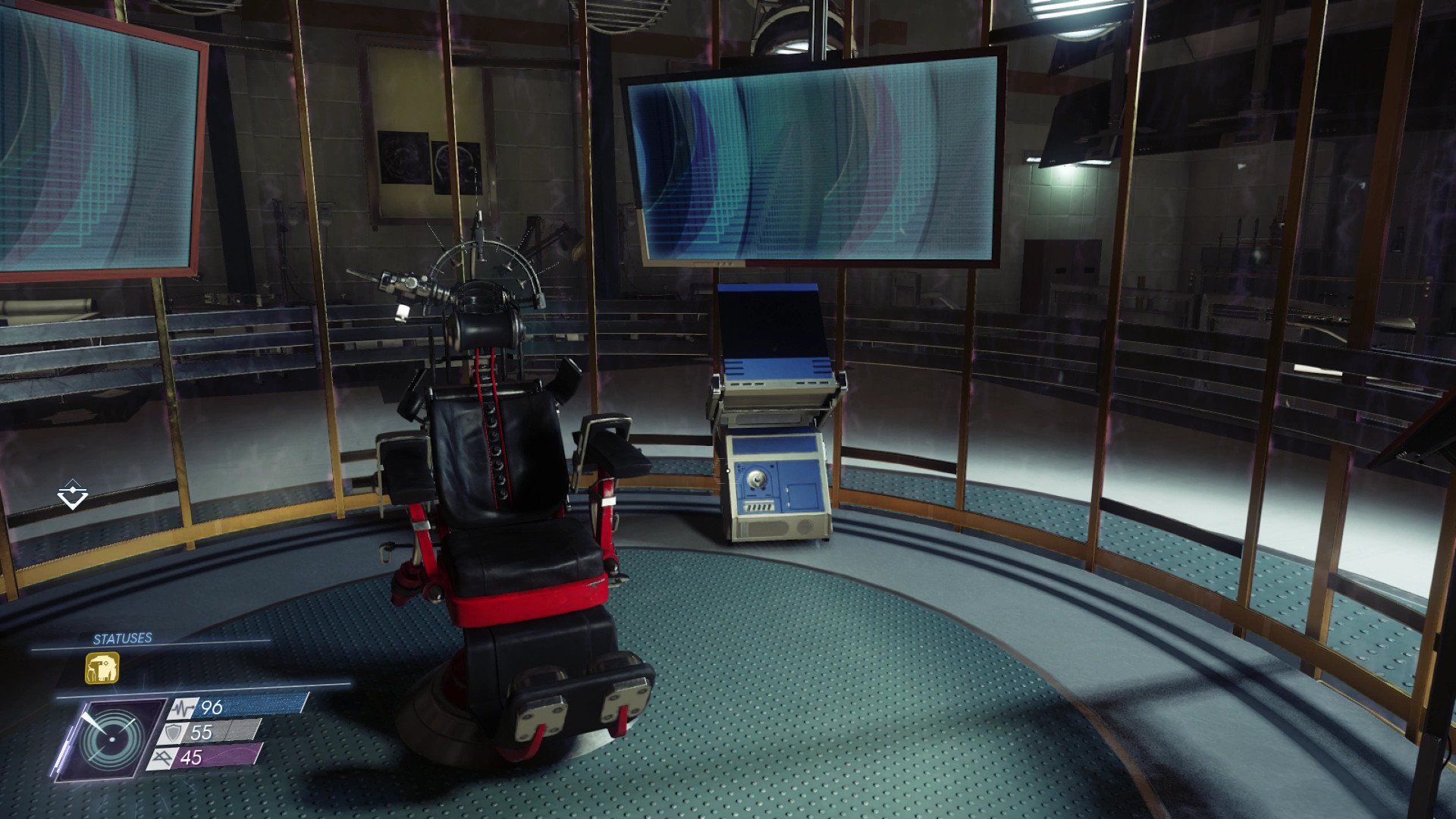
I preordered Prey after playing its "First Hour" demo recently, specifically to write this review. As impressive as Prey's mind-warping opening is, I found the combat to be a little awkward, the visuals to be dated, and the familiarity of its setting to be a little suspect. You simply can't discuss this game without mentioning Bioshock.

From Prey's UI elements, "experiments-gone-wrong" plot, and art deco-inspired style, few Bioshock fans will be able to avoid the comparisons. And neither will Prey's reviewers.
That said, the comparisons only hold weight at the very surface of Prey. As you get under Prey's skin and stalk its painstakingly detailed environments, liberating map layouts, and uncompromisingly dynamic engine, you'll arrive at the same conclusion that I have: Prey is a truly special game.
The story behind Prey
Prey is a sci-fi horror title that trades gore and spectacle for relentless paranoia. Set aboard the Talos I space station, as Morgan Yu (either male or female) you work for TranStar, a global megacorporation leading the thriving 2030s space industry.
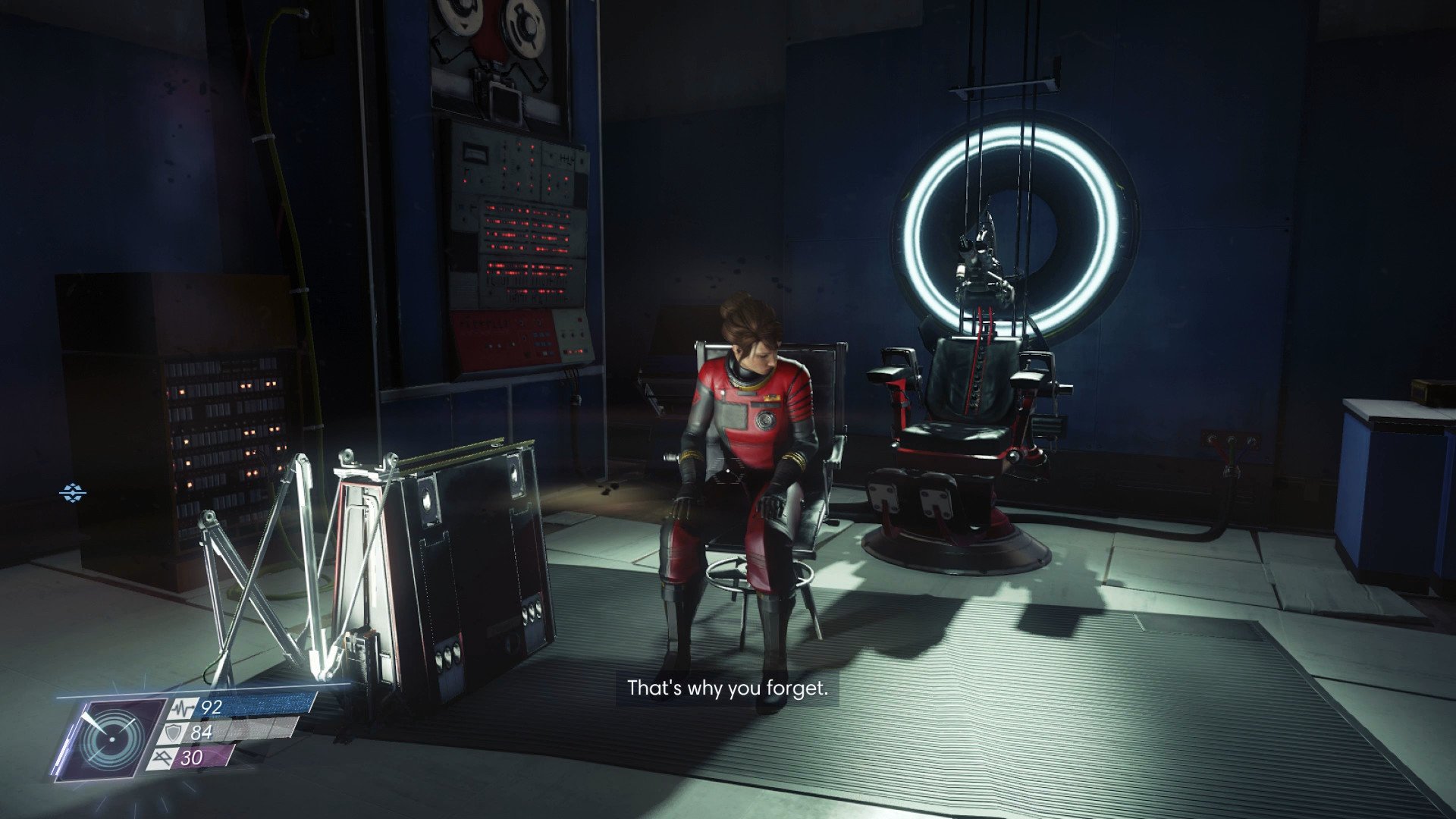
The space race between the Soviet Union and the United States took a different turn in Prey's universe, which saw President Kennedy survive the assassination attempt on his life. The U.S. and U.S.S.R. had worked together to build a space station dubbed "Kletka," which would later come to be known as Talos I.
While the public celebrated the breakthrough in relations between the Soviet Union and the U.S., the original purpose of Kletka, however, was a little darker. The Soviets had encountered an aggressive alien threat during the early years of the space race, and Kletka's purpose was to contain these oil-like metamorphic creatures, which would later become known as the Typhon.
Prey bleeds atmosphere. BLEEDS. pic.twitter.com/g6dPROsmib— Jez Corden (@JezCorden) 6 May 2017
In the late 90s, Kletka was abandoned after decades of failed Typhon research, containment mishaps, and spiraling budgets. In 2030, TranStar purchased the derelict station and added several new modules for habitation, research and development.
All the latest news, reviews, and guides for Windows and Xbox diehards.
Without giving too much away, your family's scientific contributions within the company led to a fundamental reimagining of the limits of human potential. Along with Morgan's brother, TranStar CEO Alex Yu, the two oversaw the creation of "Neuromods," which afford any human the ability to learn new skills with a simple (and quite brutal) eye injection. Advanced mathematics, classical piano, new languages and knowledge can be democratized – for a price.
It's the masterful combination of these elements and heaps of detail that makes Prey's world so welcoming and terrifying.
Talos I is the epicenter of TranStar's neuroscientific breakthroughs. And this is where much of the game takes place. It's home to dozens of individual scientists and engineers, supported by robotic operators who serve as floating servants and general workers.
While elements of Prey's plot are fairly recognizable, from its containment-breaching alien creatures to its dodgy experiments in extra-judicial regions of space, it's the masterful combination of these elements and heaps of detail that makes Prey's world so welcoming and terrifying.
It's no spoiler to say that things go badly wrong aboard Talos I and that Morgan Yu is dropped right in the middle of it. Your goal is to discover the true nature of the Typhon, discover what went wrong aboard Talos I and ultimately find out who is responsible.
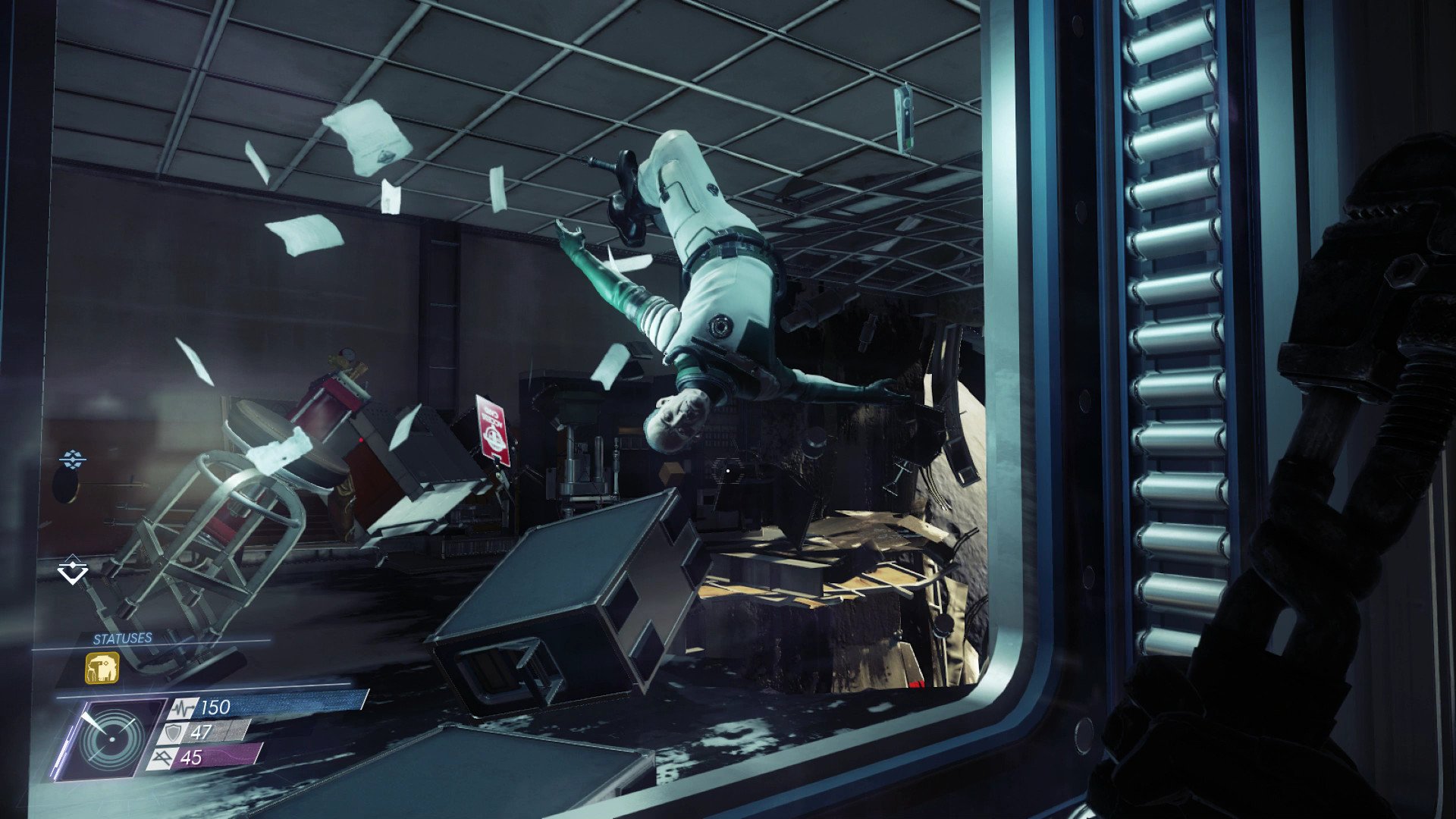
Prey weaves a cohesive narrative that is as engrossing as it is meticulously consistent. Prey serves as a wonderful introduction to the rebooted 2008 property, delivering a rich canvas of history and world lore that feels as though it already has huge potential for future entries.
I can't (and won't) spoil Prey's main plot, because it's the mystery and intrigue that drives you forward. The world itself tells the game's story – camera control is never taken away from the player.
It feels like almost every single individual NPC inhabitant on Talos I has a story to tell.
There isn't a single event in Prey that happens for the sake of it. At the start of the game, a large explosion rips through the side of the station outside the window. You'd be forgiven for thinking that it was just a pretty set piece, but later on, you'll find yourself spacewalking through the breach.
Every little event in Prey feels like a piece of a larger jigsaw puzzle. It feels like almost every single individual NPC inhabitant on Talos I has a story to tell. And they intersect and overlap. The divergence of events is a big theme in Prey, right from the fact that Kennedy was never assassinated, to the very method of the game's famous "Mimic" enemy's metamorphoses. How you deal with other characters will produce consequences, and even the way you upgrade your own skills and abilities has consequences.
Voyeuristically retracing the steps of Talos I's many, many inhabitants is depressing at times. :( RIP in piece. pic.twitter.com/giTcuray7i— Jez Corden (@JezCorden) 7 May 2017
I found myself caring about NPCs in a way I never have before. After spending 20 hours learning about someone's life from audio files, email correspondence, diary entries, and even video messages from their kids, beamed from Earth, it's heart-rendering when you finally discover their corpse, suspended in zero-G. These are characters that serve no gameplay purpose but are there to add nuance to one of the richest game world's I've seen in a long time.
Prey's narrative delivery isn't your typical string of cinematic set pieces. Instead, it's delivered with subtlety throughout the game's environment. But make no mistake – it's no less powerful. And unwrapping every detail of Prey's events is an emotional roller coaster.
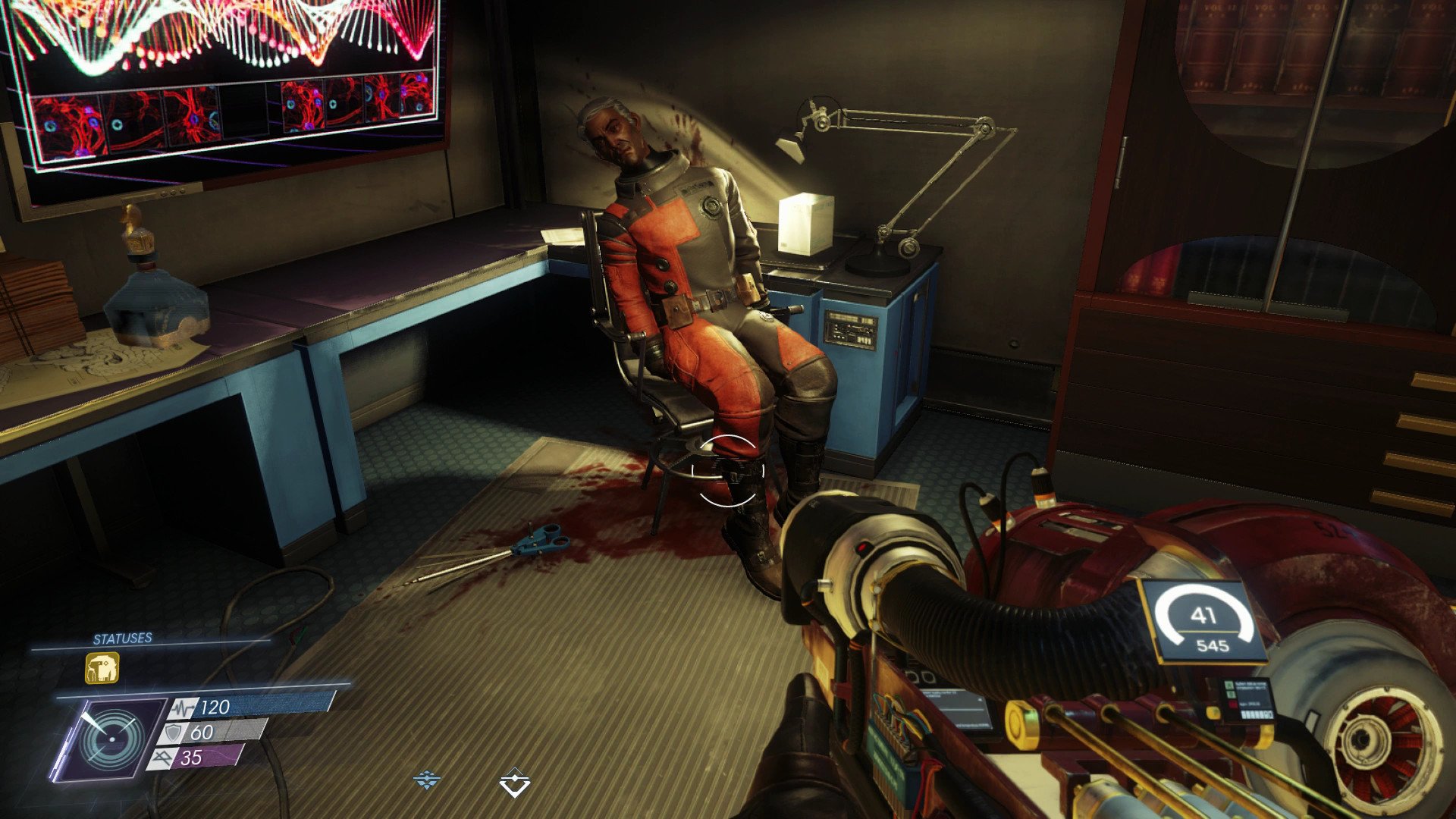
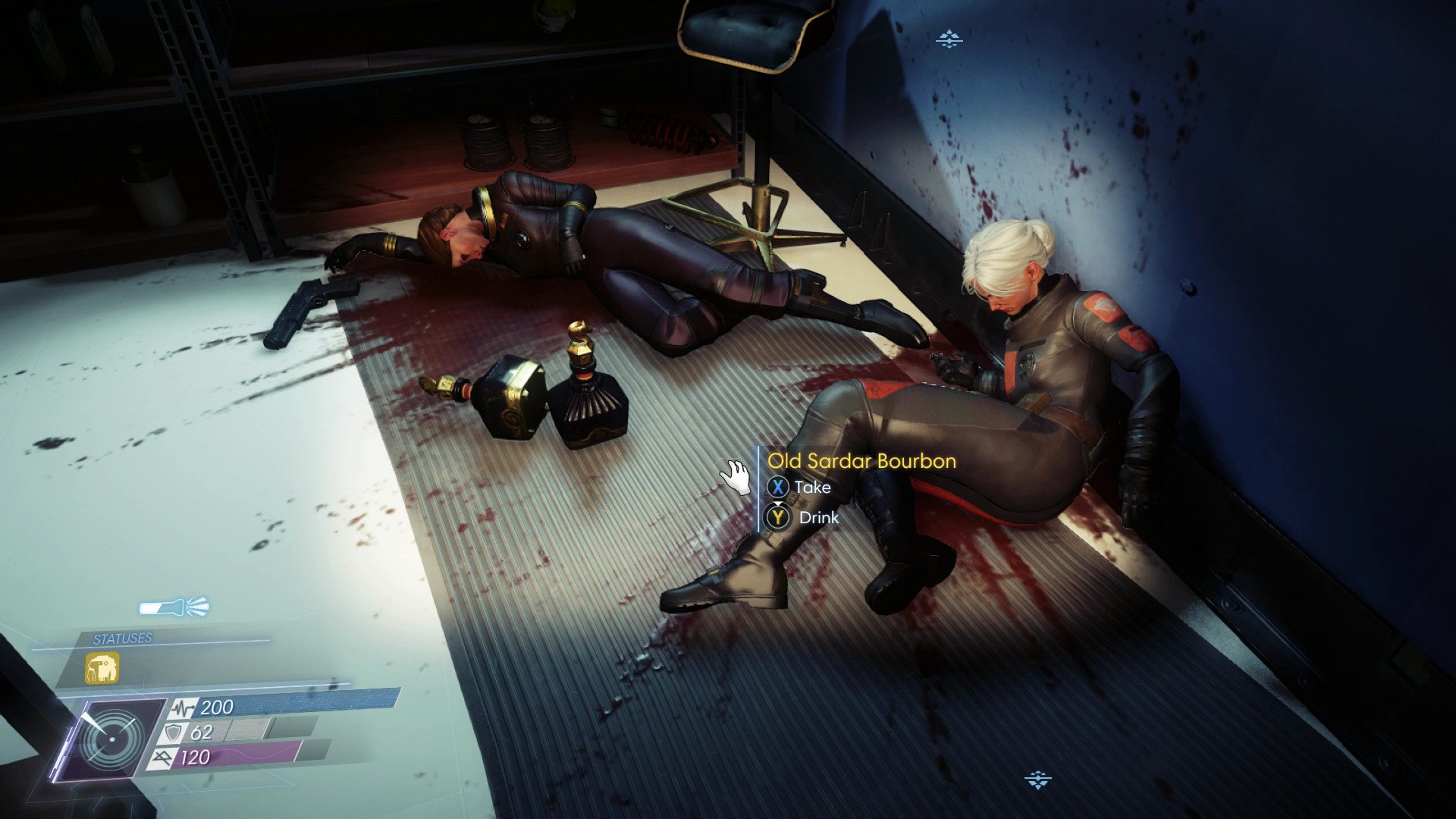
It is quite hard to talk about Prey's story without spoiling it, but even if you're only in it for the main plot, every morsel of information you uncover about the game's central antagonist gradually transforms Prey from a survival flick into a crusade for justice. There are side orders of metaphysical, trans-dimensional phenomena, and mysteries that lead you to question the nature of everything. Prey commands your attention throughout.
Prey's setting, visuals and audio
It's incredibly important that Prey has such a grand world-building structure, because it isn't going to win any awards for its visuals.
While I appreciate the stylized realism Arkane Studios utilizes in its games, namely Dishonored, I feel that it's a little jarring in Prey. The game's objects, weapons, and environments stray further into pure realism than its characters, enemies, and ability effects, which often look quite cartoony by comparison. As a result, they sometimes come across as looking dated rather than stylized.
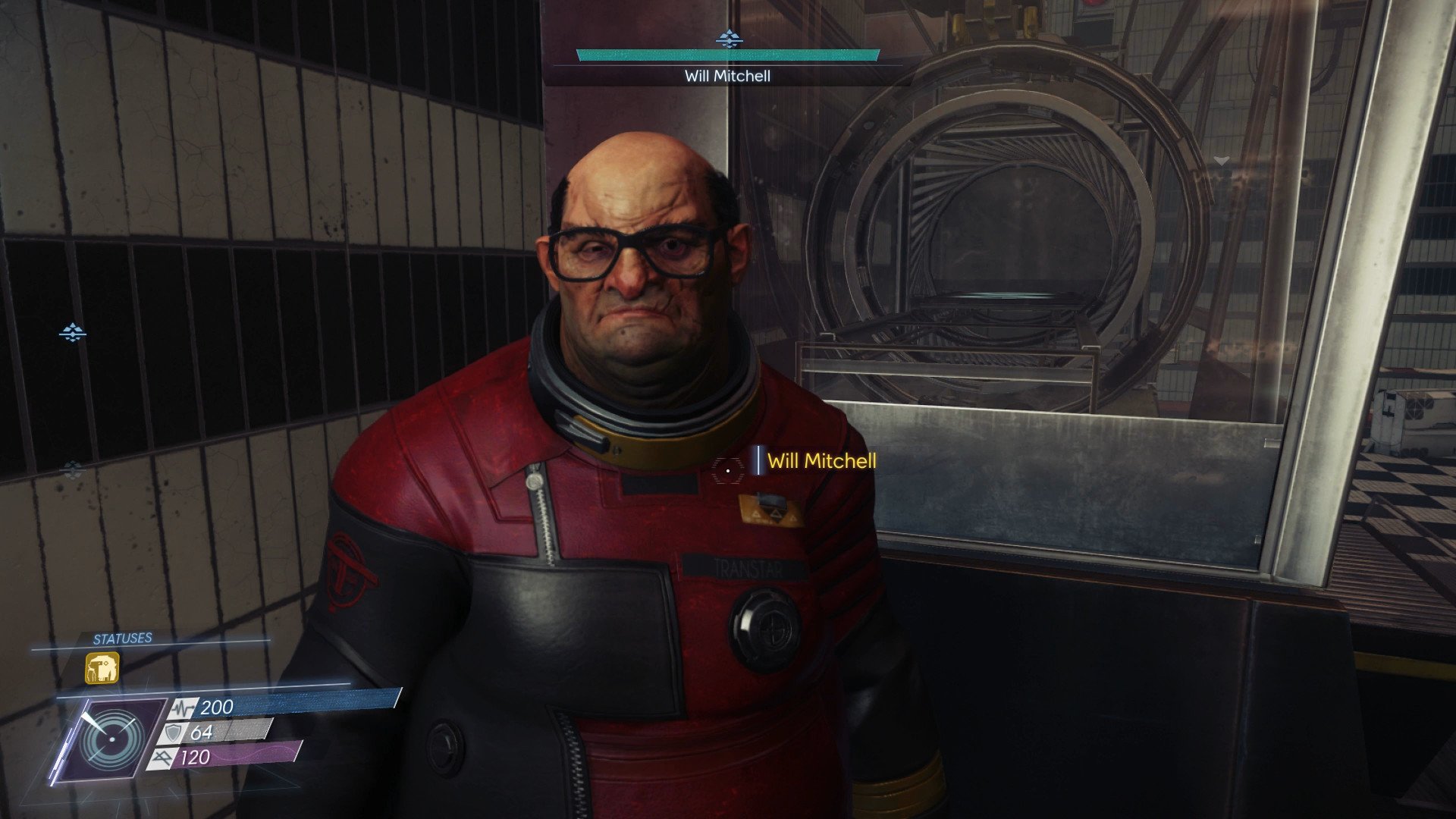
As mentioned, the history of each Talos I individual is laid bare in audio logs, text files, and even things as mundane as Post-It notes, giving Prey's world unrelenting believability. Every facility on the station has a purpose, giving you the impression of a functional world that isn't simply there to serve as a vehicle for first person shooter (FPS) gameplay.
Prey's world bleeds immersion.
Prey's world bleeds immersion. There's not a slither of copy-and-paste on Talos I, and considering the game is set entirely aboard a space station, it has a surprisingly diverse array of locations.
Talos I's history weaves well into the game's design. While some areas have clearly been retro-fitted from the Soviet era, others appear more modernized. As a game set in the 2030s, you might expect Talos I to be brimming with sci-fi futurism, but Arkane opted for something a little more grounded, emulating the films Blade Runner and Alien. Yes, there are anti-gravity flying robots and giant laser cannons, but there's a lot of exposed circuitry on display here, as though every piece of tech was still in the prototype phase. Talos I is, after all, a research facility.
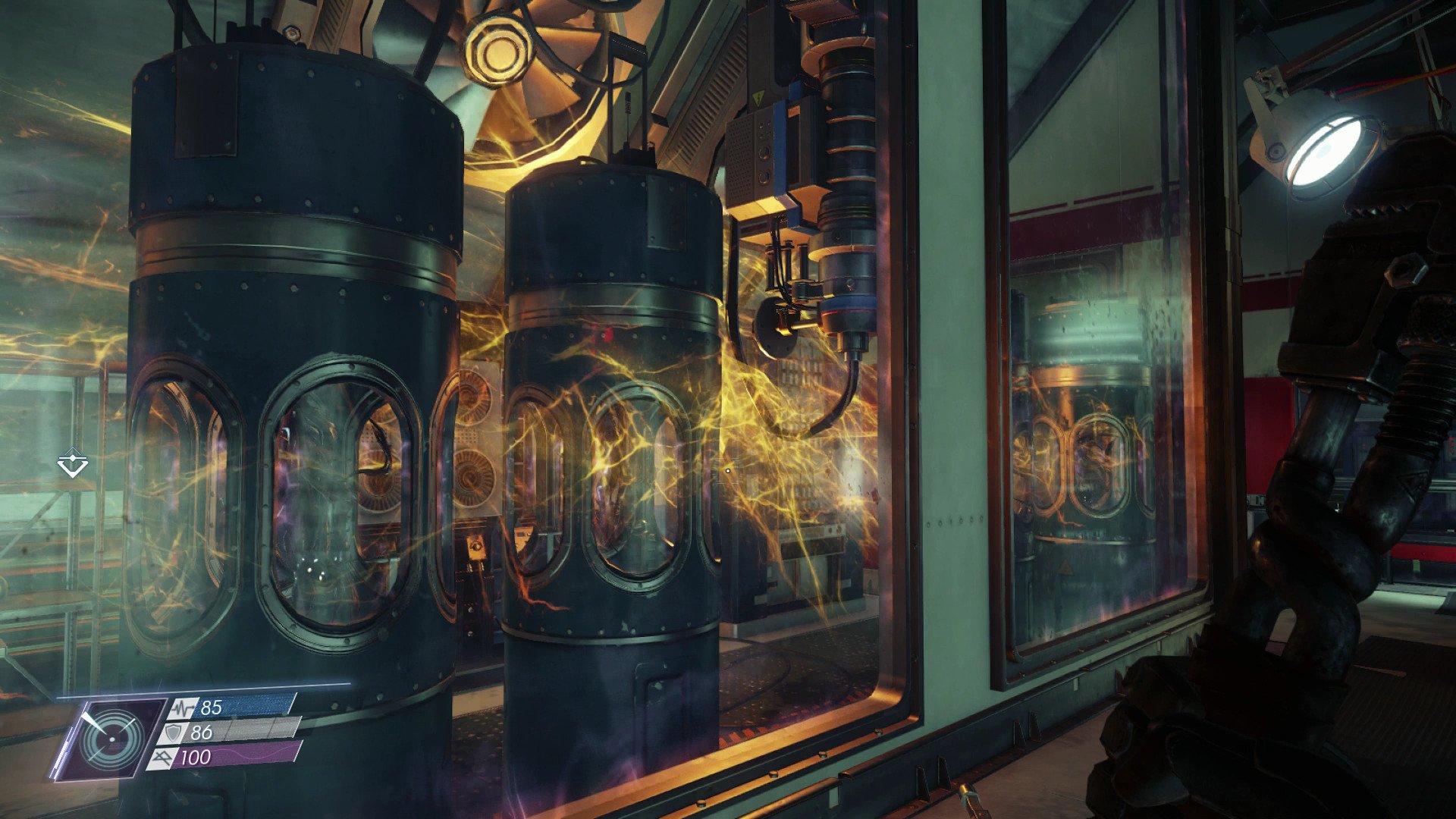
Talos I was designed to be a luxurious home for the geniuses working there (and, indeed, you can find university certificates for almost every relevant NPC), but now, the space station has been turned upside down by the Typhon. Mimics can take the place of any similarly-sized object, whether it's a coffee cup, a chair, or even a med kit. Throw in various other horrors – that can attack from anywhere, and without warning – and Prey is a fraught enough from a gameplay perspective. However, when you combine these elements with Mick Gordon's creepy, paranoia-inducing soundtrack, it elevates the experience in almost every sense. Prey doesn't need dark hallways or gore spectacles to keep you on edge. Some sharp harmonic dissonance and a twitching shadowy coffee cup is more than enough, trust me.
Prey has one of the most immersive and detailed game worlds of recent memory. For what it lacks in more advanced graphical technicalities, it makes up for with environmental detail and stunning audio work.
Prey Gameplay
To call Prey a first-person shooter would be accurate but not the full answer. I've spoken to people who found Prey's combat to be "too slow," or the weapons to be awkward to use, but as it outlines in the game's loading screen tooltips, it's designed that way.
Morgan Yu isn't a space marine superhero, and Talos I isn't a military installation. Besides a couple of weapons designed for the station's security team, most of Prey's arsenal consists of engineering tools and prototypes. The Typhon aliens infesting the station are stronger than you, and as such, on normal difficulty or above, planning for each fight is crucial for survival.
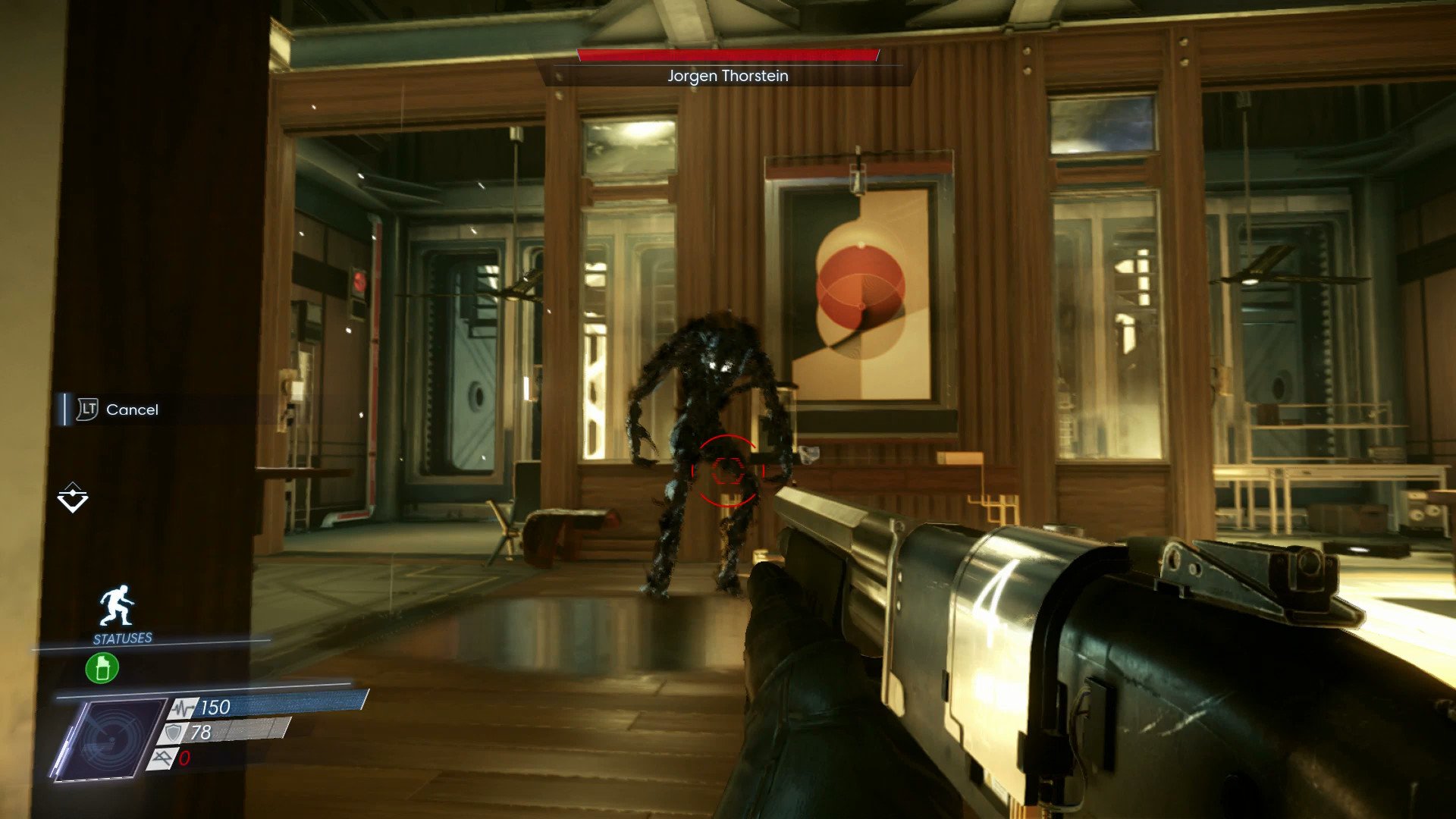
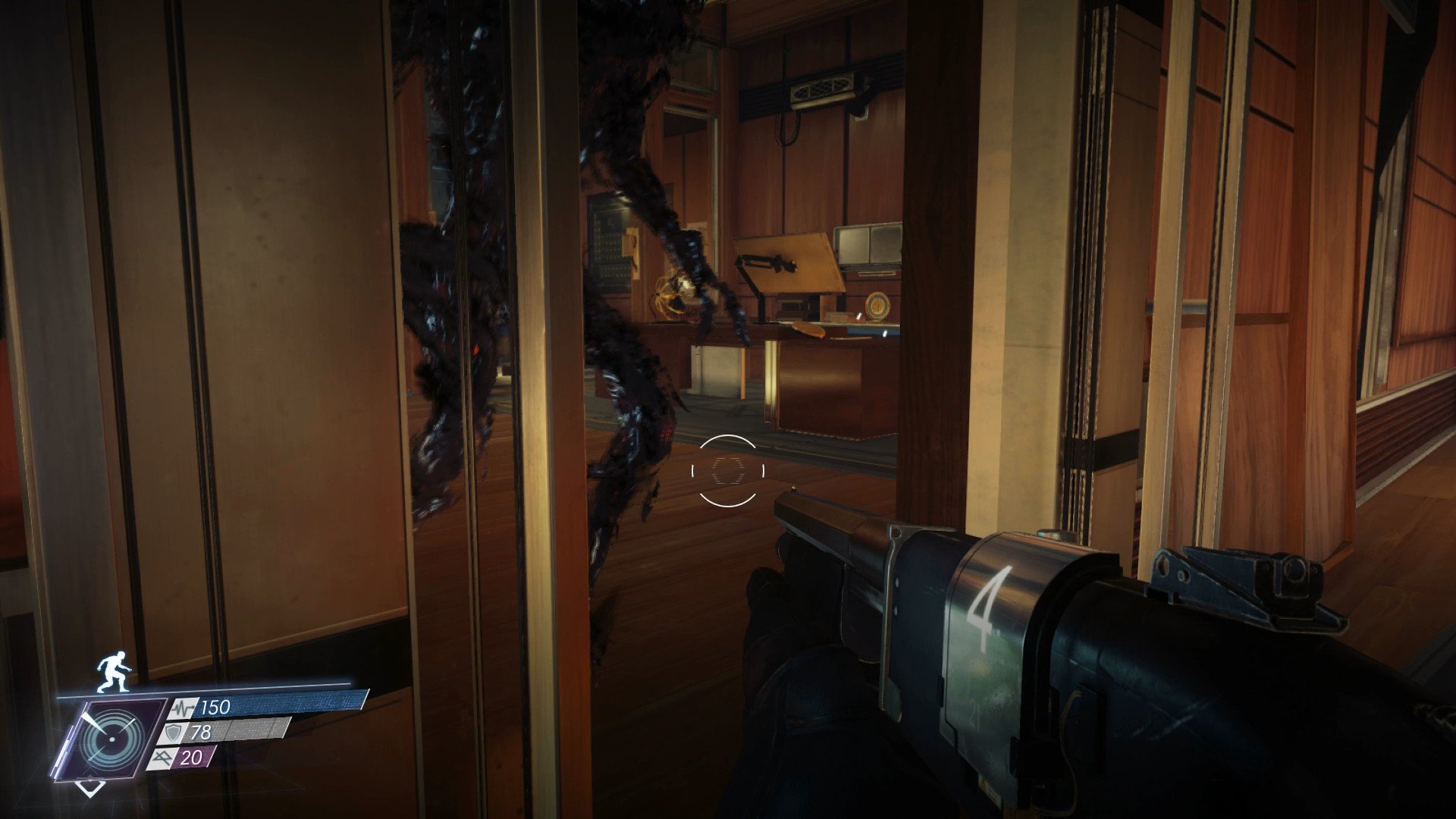
Morgan Yu is squishy, even with the end-game unlocks. The more powerful aliens can kill you very quickly, but Prey gives you piles of tools to help you get an advantage.
Whether it's setting Recycler grenades as mines, repairing and positioning security turrets, or starting the fight with a stealthy sneak attack, surviving a confrontation is always a rewarding experience – but you needn't play the stealthy, methodical route if you don't want to.
Prey allows you to customize your character in various ways. Whether it's through upgrading your favorite weapons, focusing on stealth or gunplay, you should be able to tailor Prey to your own unique playstyle. However, if you want to go through Prey feeling a little less like a desperate scientist, and a little more like a sci-fi badass, Typhon mods are for you.
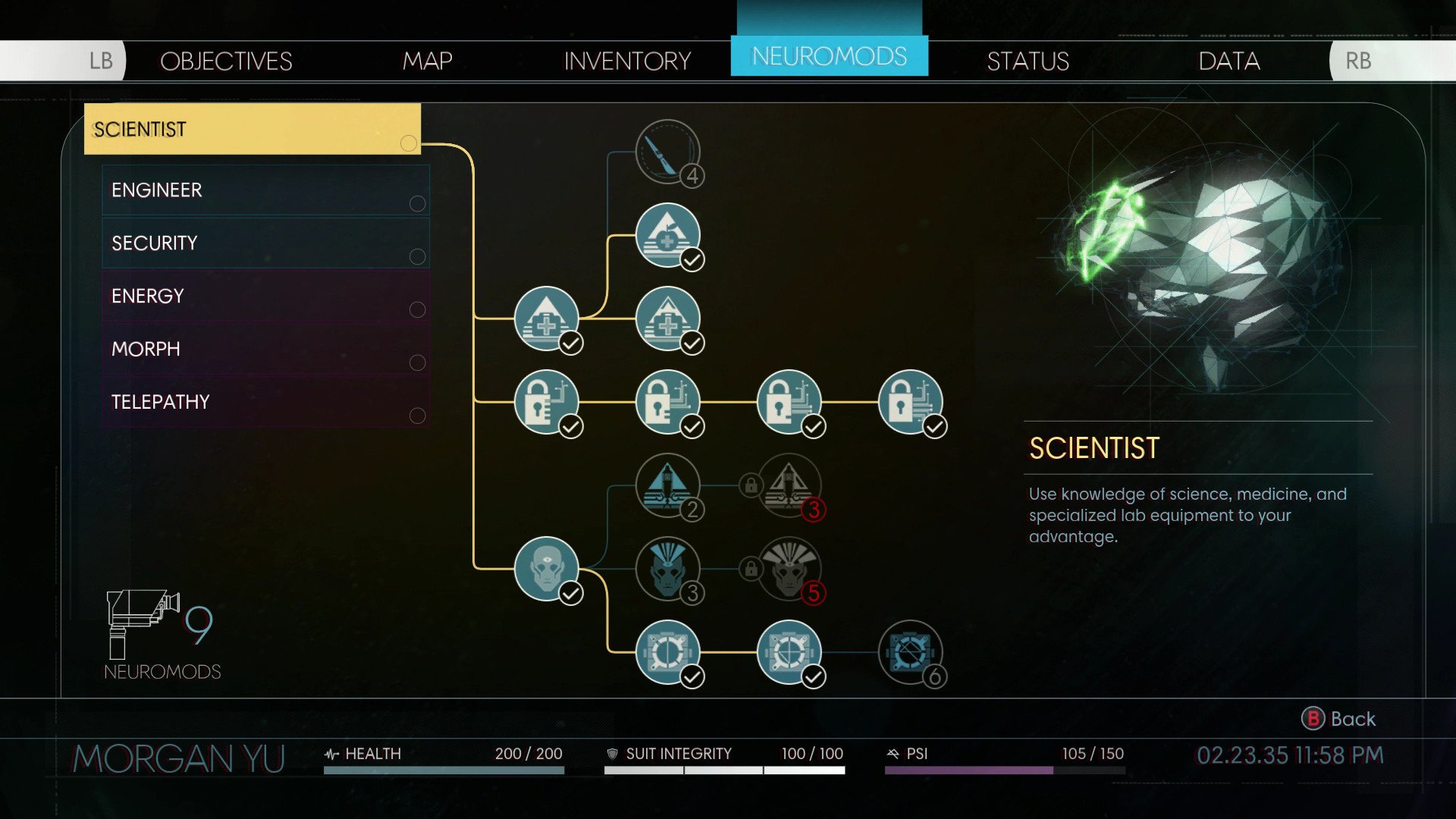
I haven't unlocked any of the Typhon alien's powers because as noted above, every decision in Prey has consequences (and hey, it gives the game an edge of replayability, too). But if you do take them, you can expect to turn the enemy's supernatural abilities directly against them.
You can set up explosive plasma traps, throw enemies into the air, or transform yourself into a coffee cup and sneak away. Every ability you see Typhon aliens use can be researched and modded into your own DNA, making Morgan Yu a little less Gordon Freeman, and a little more DOOM guy.
Getting those upgrades will require heaps of Neuromods, which in turn, requires exploration. And thankfully, Prey is an exploration fan's paradise.
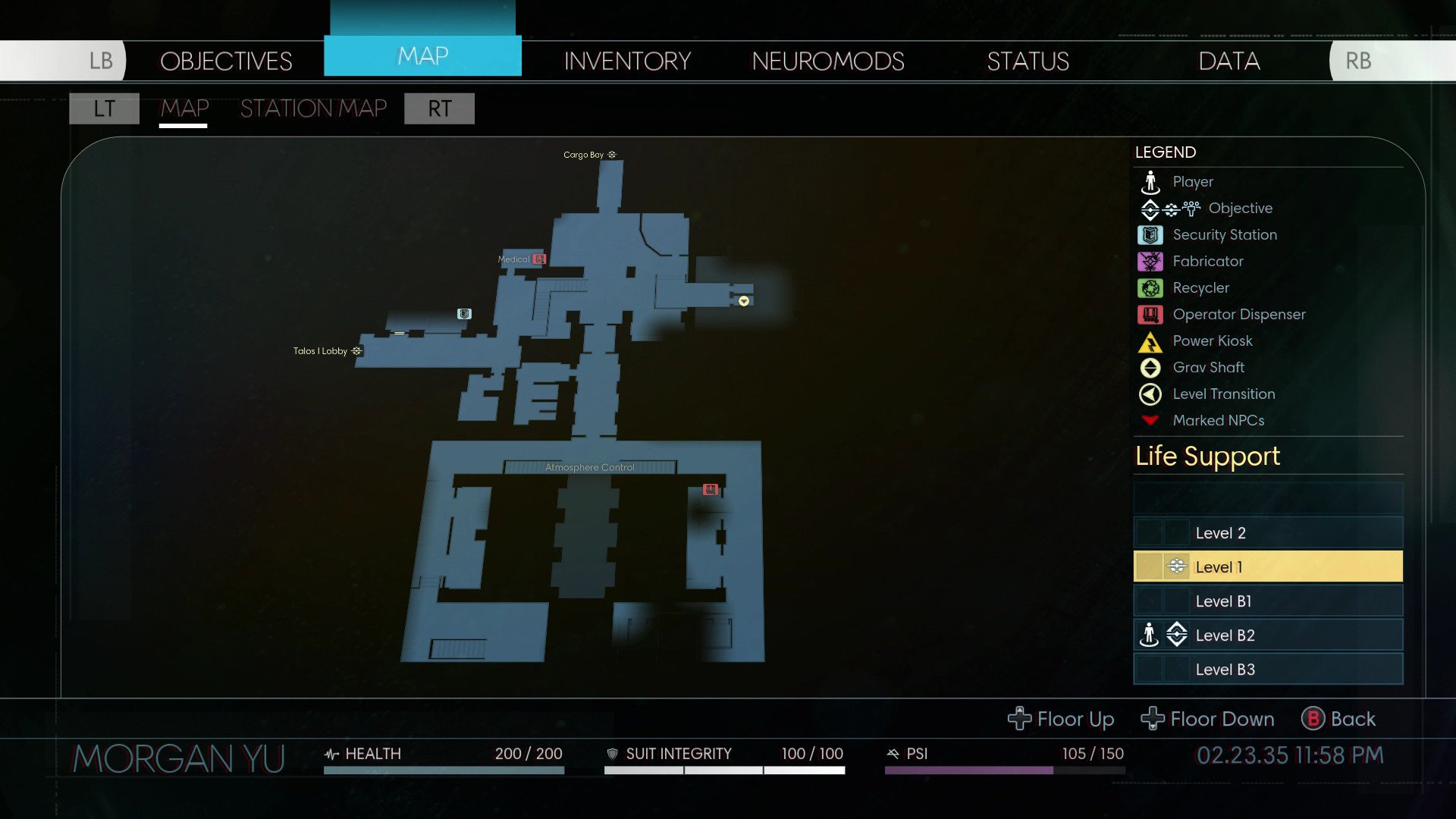
Talos I has huge maps that are interconnected with lifts, maintenance tunnels, and even exterior space walking. Plenty of Prey's areas become accessible later in the game, Metroidvania-style, once you've found new keycards or taken new abilities. Leverage III, for example, will allow you to lift the game's heaviest objects, which is a requirement to access one of the game's earliest blocked rooms.
You can Neuromod yourself with hacking abilities, super strength, the ability to leap really high, and the skill to repair broken systems. Even if you don't pick up some of these traversal abilities, Prey often presents creative players with other opportunities.
The unique Gloo Gun sprays an adhesive, fast-hardening fluid that can be used to entrap enemies. It can be used to block exposed electrical cabling, or put out fires, as well. It can also be used to create bridges and stairwells, allowing you to gain access to new areas.
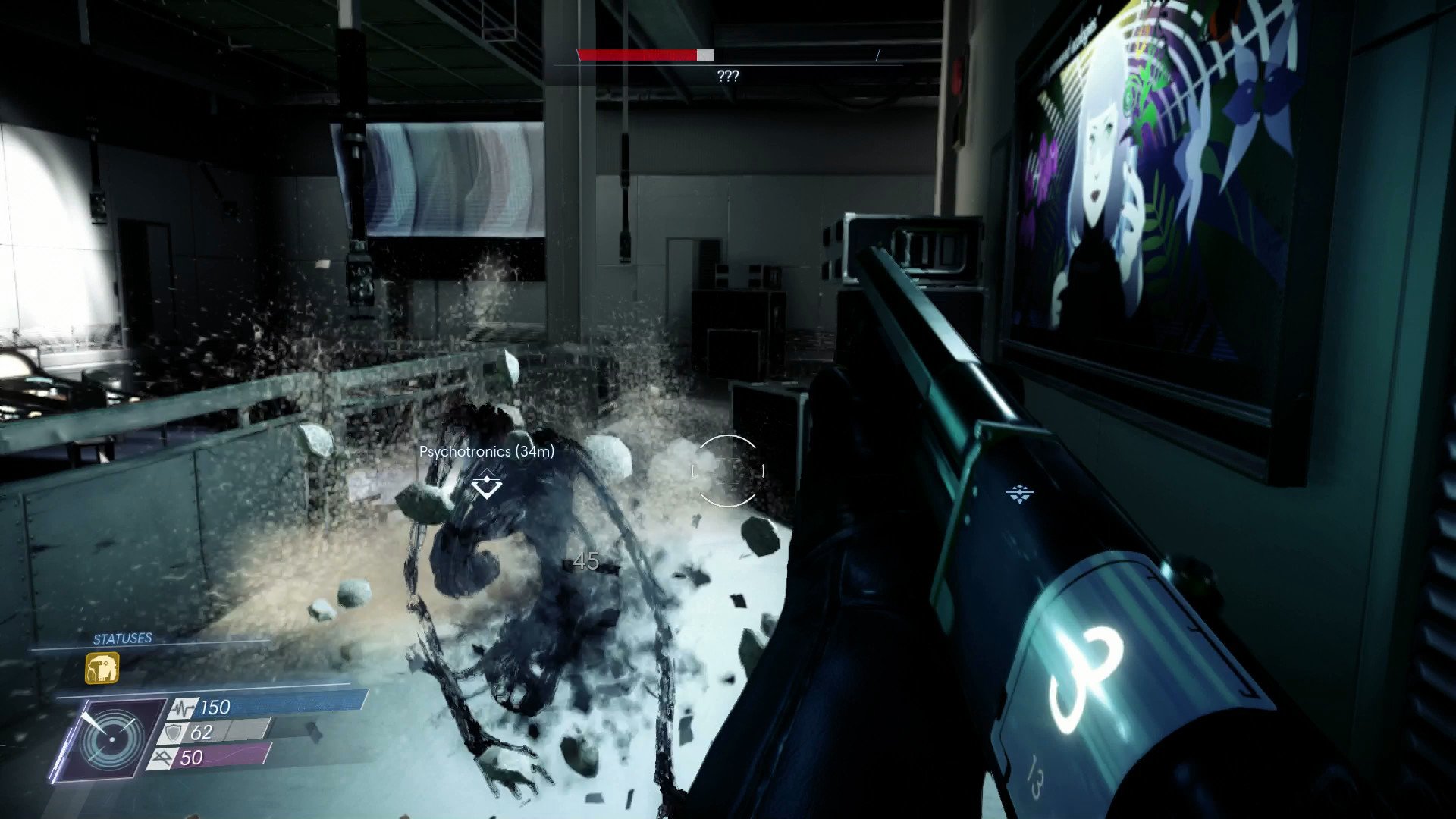
Prey's maps have an astonishing amount of verticality. Often if you can't get into a room, there's usually a way in either above using the Gloo Gun, or below, using a maintenance vent.
You can play Prey like a typical shooter, but you'd be playing it wrong.
When you're not sneaking around corners or plugging Typhon in the back with your shotgun, Prey provides plenty of other reasons to explore. The game's crafting system can be critical to your success, allowing you to recycle junk objects found throughout the its world into materials for building ammo, med kits, and even Neuromods for progression. However, thanks to the game's quick save system, I usually just reloaded my save when I performed particularly poorly, resulting in a huge stockpile of food and other health items. Players of games like Fallout and Skyrim probably know this mentality well.
Even with the stockpile, Prey threw plenty of curveballs into proceedings to keep me on my toes. Eventually, far more powerful and dangerous enemies begin showing up, including the dreaded – and randomly positioned – Nightmare. Nightmares are enormous human-like Typhon whose only purpose is to kill you. They take an inordinate amount of ammo to defeat, so it's often better to simply sneak past them and wait for them to move to another area. It's not only Typhon who want to see Morgan Yu dead, either ...
The mother of all nope.jpg. #Prey @ArkaneStudios pic.twitter.com/xhqh4IBhEg— Jez Corden (@JezCorden) 6 May 2017
You can play Prey like a typical shooter, but you'd be playing it wrong. The real beauty of Prey can be found in the dynamism of its engine. Seemingly pointless weapons, like the toy Nerf dart crossbow, can actually become quite versatile tools in certain situations. For example, you can use the darts to press unreachable buttons, distract enemies, or trigger remote mines. The Gloo Gun can be used to block doorways, funneling enemies towards a turret, or create cover. Once I unlocked superhuman strength, I found myself using guns even less, instead opting to hurl huge objects at my enemies – squashing most outright.
It would be inaccurate to say that Prey is a simple FPS. The power combos of Bioshock, the dynamism of Half Life, and the stealth elements of Deus Ex. Throw in a dash of Fallout-style scavenging, Dead Space atmospherics, and some Metroid-style map layouts and exploration, and you'll begin to understand what Prey really represents.

The inspirations of the game are plain as day, but through the vision of Arkane Studios, the studio has built upon every single genre it seeks to emulate. Rather than craft some diffuse Frankenstein monster of a game, the company crafted something that's greater than the sum of its parts.
Prey review conclusion
My favorite aspect of Prey is that everything about the game's world makes sense and is fully explained. Nothing is there for the sake of it, every piece of tech, every shred of sci-fi phenomena, and even the cigars that litter the station are explained. (There's no cancer in the future. Thanks, Neuromods!)
Like the game's namesake, you are not the apex predator in Prey, and the gameplay matches. You have to use your wits to survive, abusing the game's dynamic systems to gain an advantage on your enemies. Whether you're setting traps or building turrets, or simply sneaking, Prey rewards the cunning, over the foolhardy. Unless, that is, you decide to unlock those powerful Typhon abilities. But are you prepared to suffer the consequences?
Pros:
- Painstakingly feature-rich world.
- Incredible sound track.
- Rewarding, thoughtful shooter combat.
- Engrossing atmosphere, story, and character writing.
Cons:
- Has FPS issues in certain situations.
- The graphics can look a little dated at times.
Prey might not be the prettiest game, but it's among the most atmospheric. Arkane Studios has proven itself time and time again to be comprised of world-class world builders. Prey is no different. If you're a fan of Dead Space, Deus Ex, or Bioshock, you simply have to buy this game.
Prey is available for Xbox One, PlayStation 4 and PC right now for around $59.99.
Disclosure: This review was conducted on Xbox One using a copy purchased by the reviewer, unlocked for early access by Bethesda.

Jez Corden is the Executive Editor at Windows Central, focusing primarily on all things Xbox and gaming. Jez is known for breaking exclusive news and analysis as relates to the Microsoft ecosystem while being powered by tea. Follow on Twitter (X) and tune in to the XB2 Podcast, all about, you guessed it, Xbox!
